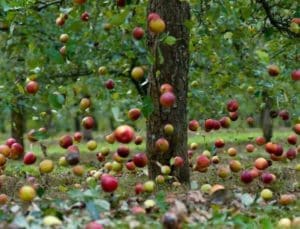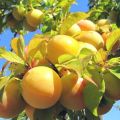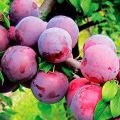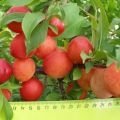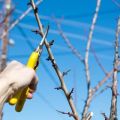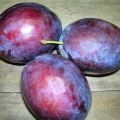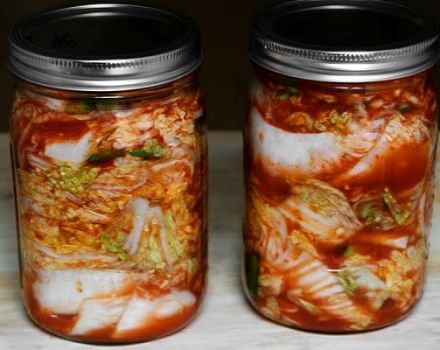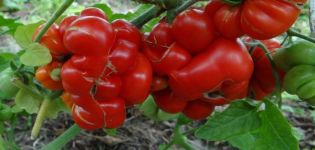Description of plum varieties Yakhontova, pollinators, cultivation and care
When growing a plum tree Yakhontovaya, gardeners do not have any particular difficulties, even a novice amateur can handle it. It is especially appreciated for its sufficient winter hardiness and endurance to adverse environmental factors. To achieve not only quantitative, but also high-quality harvest from this unpretentious and yellow-fruited plum, it is necessary to adhere to the basic rules of planting and care.
The history of breeding the plum Yakhontova
This variety of domestic selection was bred by H.K. Enikeev and S.N. Satarova on the basis of the Moscow VSTISP. Interspecies Eurasia 21 and Smolinka became the parental pair. The name of the hybrid is fully consistent with the variety, its bright yellow fruits. In 2008, the Yakhontova plum was entered into the state register.
Description
This variety of plum is distinguished by its vigorous growth, its height is almost 5.5 m. The crown has a compact size, a spherical shape and an average degree of foliage. The color of straight bare branches is brown. Leaf plates with a matte surface are distinguished by an elongated shape, pointed tips and a light green color.
Fully ripened fruits of the Yakhontova plum acquire a pronounced yellow color. Their skin is thin, rounded, and has a wax coating. The mass of berries is 30 grams. The pulp is also yellow in color, quite juicy with a small, easily separable bone and sweet and sour taste.
Tasting assessment of Yakhontova plum 5 points according to the State Register of Plants. In the dessert variety, the sugar content is 9.0%, the acidity is 3.5% and the vitamin C concentration is 14.5 milligrams per 100 grams.
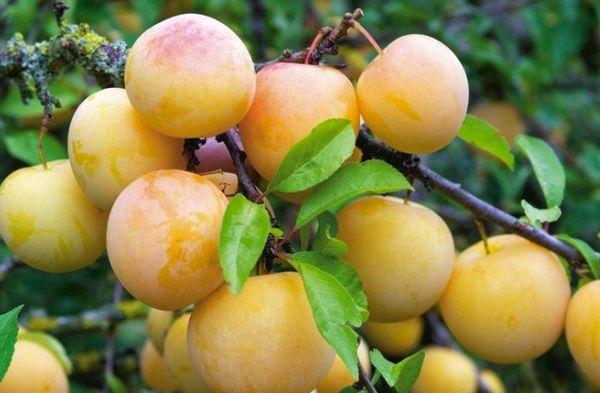
Pros and cons
Among the positive characteristics of the Yakhontova plum variety, experienced gardeners note:
- high consumer qualities;
- dessert taste of fruits;
- not afraid of prolonged subzero temperatures (up to -30 degrees);
- excellent performance indicators (50-70 kilograms per tree);
- large-fruited;
- early maturity (begins to bear fruit 3-4 years after planting in a permanent place);
- universal purpose of fruits;
- increased immunity to major ailments;
- resistance to dry weather.
But the plum variety Yakhontovaya has its own weaknesses, including:
- the need for additional pollination (partial self-fertility);
- large size.
The large size of the tree can be reduced by grafting it on felt cherry, VVA-1, Alexy, 2-17.
Character traits
Distinctive features of the Yakhontova plum are its resistance to frost and dry season, yield and stable fruiting.
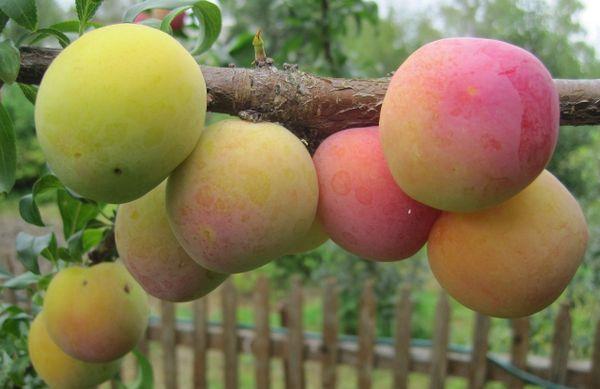
Resistance to minus indicators and drought
Plum Yakhontovaya has an average level of drought tolerance. For its successful cultivation, neither moisture deficiency nor an excess of moisture should be allowed. The frequency and abundance of watering plums directly depends on the weather conditions in a particular region.
The resistance of the Yakhontova plum is high. But in order for the wintering to pass painlessly for the garden planting, it is necessary to take care of additional shelter in the fall.
Susceptibility to disease and insects
Due to the high degree of resistance to viral and fungal diseases, the Yakhontovaya plum is rarely exposed to such ailments, especially klyasternosporiosis of fruit rot. Only if serious mistakes are made in the care process, the garden plantation can be attacked by harmful insects such as plum aphid, shoot moth, moth, black sawfly.
Pollinator varieties
Given the partial self-fertility of the Yakhontova plum, it is recommended to plant Hungerka, Timiryazev's Memory, Red Skorospelka nearby. The flowering phase of the Yakhontovaya variety begins in late April and ends in early May. Plum fruits ripen in mid-late August.
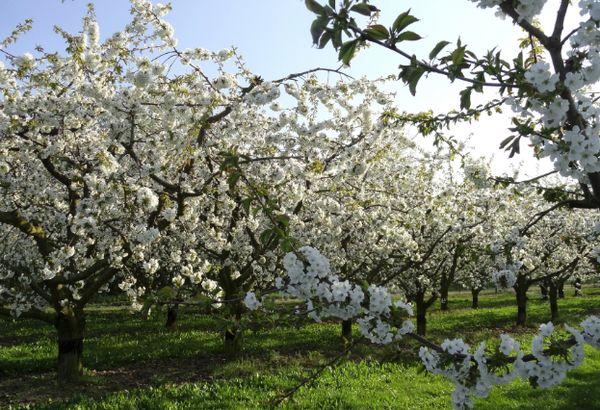
All about yield and fruiting
On average, the productivity of a tree is 20-30 kg, but under favorable growing conditions, it is possible to collect up to 50 kg of fruit. Gardeners choose the Yakhontova plum for the stability of the crop, from year to year.
Where are berries used?
Fruit products are used both for fresh consumption and as raw materials for homemade preparations. From the yellow plums of the Yakhontovaya variety, an excellent compote, jam, jam, and sauce are obtained. The fruits are versatile.
Features of planting crops on the site
Despite the relative undemandingness of the Yakhontovaya plum variety, correct planting is almost half of the success. The tree should not feel discomfort, but grow in favorable conditions.
Recommended timing
It is advisable to carry out planting work taking into account the climatic characteristics of a particular region. It is optimal to plant seedlings in spring in case of an early cold snap in autumn. In regions with a warm climate, the Yakhontova plum is planted after the foliage is dropped by the trees.
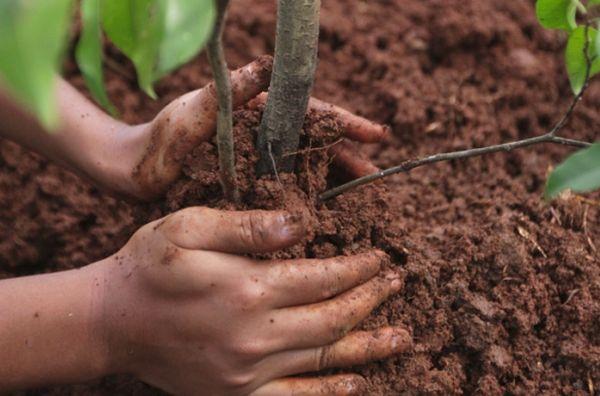
Choosing the best place to place the tree
For normal growth and development of the Yakhontovaya plum, it is recommended to give preference to glades that are sufficiently illuminated and protected from through winds. It is better to plant young plants on the south or west side of the garden. The soil must be fertile and with good moisture permeability.
The variety does not like wetlands and acidified soil. Lowlands are not suitable for planting Yakhontovaya plum seedlings, it is worth choosing places with a slight slope, plains.
What crops can and cannot be planted nearby
For high-quality cross-pollination on the site, it is recommended to place the plum in groups, maintaining a distance between varieties of 3 meters. Yakhontovaya does not get along well with pear, cherry, sweet cherry. But you can plant an apple tree, currant or raspberry next to it.
Seedling preparation
It is best if annual plants are chosen for the garden, the height of which is within 50 centimeters, and the thickness of the lateral branches is 2.5 millimeters. You can buy plum seedlings in nurseries, specialized retail outlets. The main thing is to carefully examine the planting material for the detection of various kinds of damage, signs of disease.Before planting, the dry root system of the tree must be kept in a container with clean water (10-15 minutes).
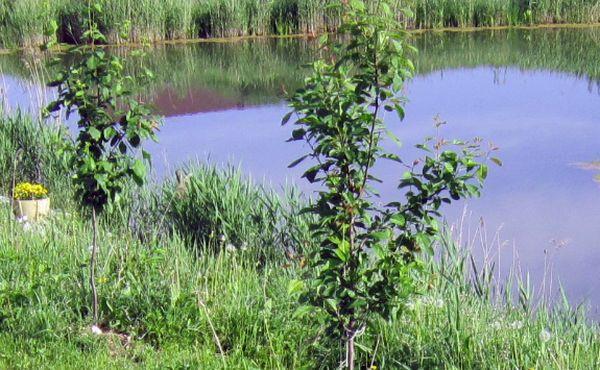
Planting technology
If planting work will be carried out in the spring, then the foundation pit should be prepared in the fall. Otherwise, planting immediately after the formation of the hole can damage the roots of the young plum, due to soil subsidence. The process of planting seedlings involves the following actions:
- First, you need to dig a pit measuring 60 × 60 centimeters and 70 centimeters deep.
- After that, the soil removed from the pit is mixed with rotted vegetation (organic matter) and superphosphate (190 grams), potassium salt (80 grams).
- The prepared pit is filled with a nutritious soil substrate.
- After subsidence, the pit is filled with fertile soil as necessary.
- A seedling is placed in the center of the pit, its roots are bred to the sides - straightened. The root collar should not be buried, it should be at a height of 5 centimeters.
- Sprinkle with earth, carefully tamp it to prevent the formation of voids, and pour it with warm water (2 buckets of water).
Compliance with the planting technology gives every chance of achieving the desired result.
How to care for a tree in the garden
Among the main measures for the care of the Yakhontova plum are: loosening and moistening the soil, pruning, preventive measures.
Frequency of irrigation and feeding
It is optimal for the Yakhontova plum to arrange abundant watering for it 3-5 times during the season. A lack of moisture must not be allowed during the plum flowering period and at the stage of fruit ripening. Water consumption for young plantations is 5 liters, and for adult specimens - 10 liters. It is especially effective to irrigate simultaneously with feeding procedures.
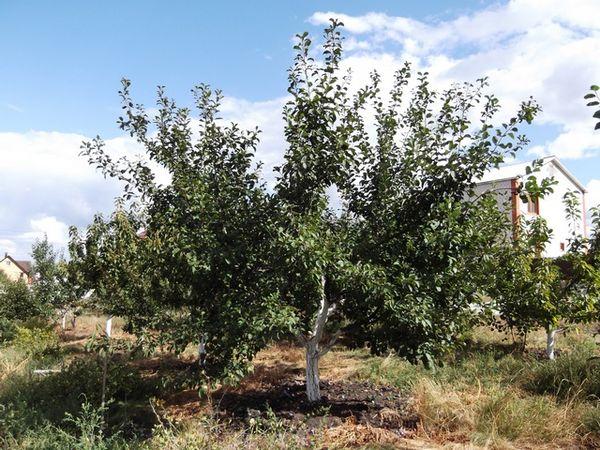
As soon as warm weather sets in in spring, a working solution based on urea, potassium salt, superphosphate (20 grams of each agent per 10 liters of water) is used for one drain. Pour the nutrient composition under the root. In the summer, the same solution is used, but without the addition of urea, and in the fall, potassium and phosphorus dressings are used. Mineral complexes for plums are replaced with slurry and wood ash.
Formation and pruning of the crown
In order to avoid problems in the future with plums, it is necessary a year after planting to shorten the shoots and form the crown. Work should be carried out at the stem level (up to 40 centimeters), leaving up to 7 side branches on the drain. Subsequent sanitary and anti-aging pruning is done every year.
The Yakhontova plum should be formed before the first fruiting, after which only dry, incapacitated shoots are removed. Ideally, the shape of the crown should look like a glass.
Prevention of diseases and pests
The provoking factors for the development of various diseases and the invasion of parasitic individuals are violations in the process of pruning a tree and improper care, or even its absence. To prevent the appearance on the Yakhontovaya plum of moniliosis, klyasterosporiosis, moth, small aphids and black sawflies, it is necessary to carry out chemical treatments, dig up the soil in the near-trunk circle and trim damaged shoots and shoots. If an ailment is detected, it is recommended to spray the plum with a working solution based on Bordeaux mixture.

Barrel circle care
So that the plum can bear fruit abundantly, the soil in the near-trunk circle must be in a loose state. For this purpose, it is recommended to regularly remove weeds, loosen the soil and lay mulch. The depth of tillage near the trunk is 8-10 centimeters, and at the border of the near-trunk circle 15-20 centimeters. Manipulation is best done with a pitchfork, so the probability of damage to the roots of the Yakhontovaya plum will be minimal.
Wintering
Preparatory work involves the removal of fallen leaves from the site, their burning, so as not to allow pathogenic microorganisms to winter in the trunk circle. If there is moss on the branches and trunk of the Yakhontovaya plum, then it should be removed, dried bark too, and the damaged areas should be treated with garden varnish or a solution of ferrous sulfate (10 grams of the product per 10 liters of water).
To whitewash a tree, a mixture of lime (3 kilograms), copper sulfate (400 grams), casein glue (50 grams) and water (10 liters) is prepared. Such a simple technique makes it possible to further increase the frost resistance of the variety.
Young trees are protected with non-woven material, and spruce branches or a polymer net from rodents are fixed on top. To protect the underground part of the plum, you can mulch the soil in the near-trunk circle with humus (a layer of 40 centimeters).
Plum variety Yakhontovaya is, indeed, an unpretentious and high-yielding plant. Correct agricultural technology and quality seedlings are the main components of successful cultivation.
